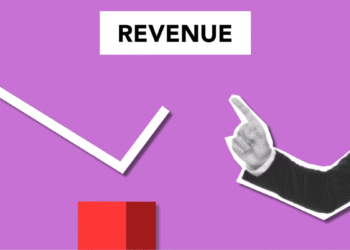There was a point early in my store’s life where I thought I was cursed.
Traffic was good. Emails were going out. Ads were running. But sales? Crickets. I assumed the problem was marketing. Or maybe price. But nope, it turned out people were dropping off at the checkout page.
That realization changed everything. And it’s exactly why you need to know how to identify and fix sales drop-off points because even a small leak can sink the whole ship.
What Are Sales Drop-Off Points?
Think of your store like a funnel. Customers enter at the top and move toward a purchase.
But somewhere along the way — product page, cart, checkout — they bounce. That’s a drop-off point.
These can be caused by:
-
Confusing layouts
-
Missing info
-
Unexpected costs
-
Trust issues
-
Slow loading pages
The good news? Once you find where people are leaving, you can fix it fast.
Tools You’ll Need (Nothing Fancy)
You don’t need to be a data expert. I used:
-
Google Analytics (GA4) — shows page-level drop-offs
-
Hotjar or Microsoft Clarity — heatmaps and session recordings
-
Your ecommerce platform dashboard — Payhip, Shopify, or WooCommerce
-
Exit surveys — “What stopped you from buying today?”
That’s it. You’re armed and ready.
Step-by-Step: How I Identified Drop-Offs
Step 1: Map the Customer Journey
I listed out the flow:
Homepage → Product Page
Product Page → Add to Cart
Cart → Checkout
Checkout → Payment
Payment → Thank You
Each step had its own analytics. I just had to see where most people disappeared.
Step 2: Use Google Analytics to Spot Exit Points
In GA4:
I went to Reports → Engagement → Pages and Screens
Sorted by exit rate and filtered for product and checkout pages
My checkout had a 70% exit rate (ouch)
That’s when I knew: I didn’t need more traffic — I needed fewer exits.
(If you’re unsure how to set this up, check out this step-by-step guide on setting up Google Analytics for Payhip to track every click on your store.)
Step 3: Watch Session Recordings
In Hotjar, I saw users:
-
Clicking the cart but backing out
-
Getting stuck on shipping questions
-
Abandoning after seeing the payment form
One customer clicked the “Return to Product” button five times — clearly confused. That’s the kind of insight numbers alone can’t give you.
(You can go deeper with heatmaps to improve conversions and see exactly where users get lost.)
Step 4: Ask Them What’s Wrong
I added an exit-intent popup:
“What stopped you from checking out today?”
Most common answers?
-
“Wasn’t sure about shipping.”
-
“Didn’t trust the payment page.”
-
“Wanted to save it for later.”
Boom — feedback I could act on.
What I Fixed (and How You Can Too)
Product Page
-
Added clearer descriptions and more images
-
Put social proof and guarantees above the fold
Cart Page
-
Added a progress bar and “free shipping over $50” banner
-
Made sure it saved items if someone left and came back
Checkout Page
-
Cut the form in half, from 8 fields to 4
-
Added Stripe and PayPal as payment options
-
Put trust badges next to the “Place Order” button
Small tweaks. Big difference. Within a week, my drop-off rate dropped 30%.
(For ongoing improvements, try A/B testing your store layout to see what changes actually increase conversions.)
Pro Tips for Optimizing Ongoing
-
A/B test fixes: Don’t assume — test headlines, buttons, layouts
-
Set up goals in GA4: Track which changes improve conversions
-
Check heatmaps monthly: User behavior changes with time
-
Compare mobile vs desktop: Often very different experiences
-
Create reminders for cart abandoners: Email sequences help bring them back
If you’re serious about sales optimization, dig into understanding conversion rate optimization to learn the psychology and metrics behind better performance.
Final Thoughts
Sales drop-offs aren’t just “part of the process” — they’re signals. They’re your customers silently saying, “Something’s not working.”
By tracking where they leave and asking why, you’ll find quick, easy fixes that turn hesitant visitors into confident buyers.
So stop guessing. Map your funnel, follow the data, and start plugging those leaks — one step at a time.
(And don’t forget to analyze customer behavior regularly — it’s the heartbeat of your store.)








